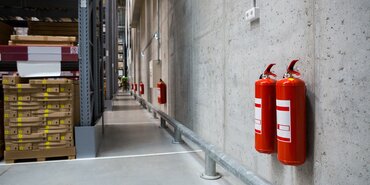TT Talk - Responsibility for accurate weight declaration in containers

Peregrine Storrs-Fox, the TT Club's Risk Management Director, comments on weight misdeclaration in containers:
'The issue of weight misdeclaration in containerised trade reared its head again in Lloyd's List on three occasions between 11 and 13 Jan 2010; the Club welcomes this focus on a subject that has not been resolved and has exercised many over the years. The Club last wrote on this in TT Talk Edition 121 (item 2) of 29 July 2009.
There is the small number of high-profile cases that have been investigated by maritime administrations - notably the UK's MAIB (Marine Accident Investigation Branch). 'MSC Napoli' provided a unique opportunity to validate the weight declaration of the deck load and, on this issue, the MAIB reported that 20% of the deck stow (alone) differed by more than 3 tonnes from
The two other MAIB investigations of note are 'Annabella' and 'Husky Trader', both of which have observed slightly different issues concerning the flow of information - particularly when it is amended - in relation respectively to container strength and cargo weight. And it is the response to the initial findings on 'Husky Trader' that has generated the latest media interest, reporting that Maersk Line is developing software by which it will be able to compare declared weight for a particular shipment against the average for the declared commodity. A mismatch will prompt the line to check the box in question and not load it if there is significant difference.
The article in Lloyd's List on 13 Jan 2010 profiled another smart innovation, which the Club has been monitoring for four years as it has progressed from 'bench trials' to full service use in a small number of marine terminal operations around the world. The load sensing technology, developed by Lemantec International, appears in one sweep to have the capability to answer a number of issues that have troubled risk managers. The patented twistlock system, which can be installed in any terminal handling equipment, precisely measures that total weight as well as the weight on each twistlock, including for twinlift and tandem handling operations. It has the capability to assist in identifying misdeclared containers and show load eccentricity - that may also indicate improper cargo stowage. It confirms whether all twistlocks are engaged, and will detect if the container is snagged in the cell guides or still secured on a road or rail chassis, amongst other things. All in all, this could be analogous to be the 'seat belt' safety advance in road vehicles and may become standard within the next decade.
It has proved easy to confuse misdeclaration with the application of health and safety rules in the port area. An overweight box, i.e. one that is loaded beyond its safe working load (SWL), is a separate and serious issue. Whilst even twin lift operations are unlikely to compromise the capability of port equipment, the freight container itself is vulnerable to such overloads. However, the misdeclarations previously referred to involved weights that were well below the SWL of the container (e.g. 10 tonnes declared, actual weight 12 tonnes). In both instances, however, correct declaration is what is needed and required. Evidence of actual weight could be required, where such facilities exist, or the terminal, in collaboration with its shipping company customers, could arrange to check weight.
However, the continuing concern that the Club would focus on is that the essential responsibility of the shipper to declare cargo is being blurred by suggesting that nodal points in the supply chain, such as terminals assume this responsibility, whereas they can only provide a check on the truth of what is declared. It is perplexing that carriers - who after all earn their crust essentially on weight and cube - seem reluctant to enforce their rights under carriage contracts when the shipper fails to comply with one of his core international convention obligations. It is at heart an issue of basic honesty as to what is in the box.
Apart from major incidents such as those mentioned above, it only takes one misdeclared, poorly stowed or secured container to kill some hapless pedestrian as the road rig unexpectedly rolls over on a corner, or where the floor falls out during rail carriage and causes a derailment. Focus is - rightly - on major maritime accidents, where the 20% discrepancy could easily cause instability or grounding, but the impact is more frequently just one by one. Is the dream of 100% accuracy too much to ask? The shipper knows what he loads in the container - he should expect to take the consequence where there is a discrepancy. This is the contractual responsibility and liner operators should take concerted action to enforce their rights. And then they - the lines - can expect terminal operators to step up to help enforce.'
The declared weight and that the deadload was about 1,250 tonnes - the equivalent of say 60 laden TEU - on departure from the load port, concluding that this element 'erodes or eliminates the safety margins' concerning the stability of the ship.
- Author
- Staff Author
- Date
- 27/01/2010




